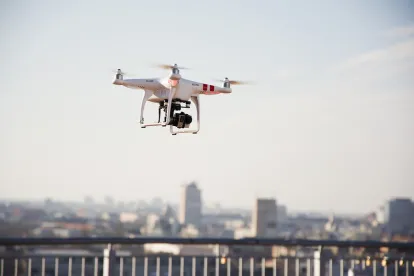The new rules will greatly expand and encourage commercial drone use but come with some limitations.
After much anticipation, the Federal Aviation Administration (FAA) revealed sweeping new rules on June 21 to facilitate commercial use of drones. Under existing rules, businesses are required to register commercial drones for approval by the FAA on a case-by-case basis. Once the new rules take effect in August, businesses may forgo individual approval entirely when using drones within certain permitted parameters.
Broadly speaking, the new rules permit daytime use of commercial drones that weigh less than 55 pounds (including cargo). Drones are generally limited to a maximum speed of 100 miles per hour and a maximum altitude of 400 feet. In addition, all drone pilots must either be certified or supervised by someone who is certified.
Although the rules will allow for a broad range of commercial uses, a number of important restrictions remain. Most significantly, commercial drones cannot be flown beyond a pilot’s line of sight, and there are no exceptions for drones equipped with cameras. This means that a commercial drone’s effective range is fairly short.
In addition, commercial drones cannot be flown over people on the ground. In effect, this restriction prohibits commercial drone use within urban areas. Moreover, the FAA anticipates that it will take at least one more year to develop rules that permit commercial drone use over densely populated areas or crowds.
Finally, the new rules do not address privacy issues with the use of drones and how they collect information on people or property. The FAA does, however, intend to incorporate privacy education into part of the pilot certification program. In addition, the FAA reminds businesses to consult state and local rules, which will continue to remain in effect.
Even with these limitations, the FAA’s new rules will greatly expand and encourage commercial uses of drones. Potential uses include crop monitoring, utility inspection, infrastructure inspection, aerial photography, rescue operations, academic and research projects, and other similar non hobby applications. Under the new rules, the FAA projects that sales of commercial drones will reach 2.7 million units in 2020.




 />i
/>i


